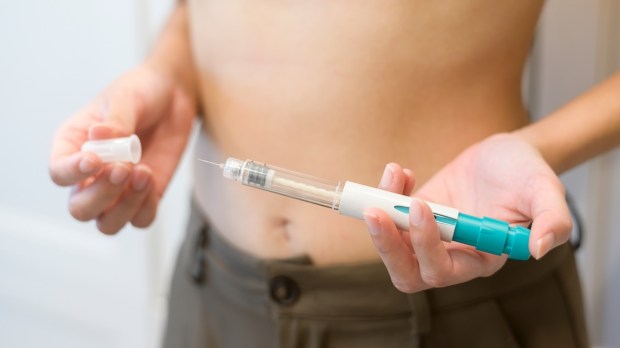On February 16, 2024, the Alabama Supreme Court ruled that embryos created via the in vitro fertilization (IVF) process are indeed children. This immediately attracted national attention and prompted IVF centers in the state to halt operations. Many politicians raised alarm and even otherwise pro-life politicians jumped on the band wagon to ensure the public that access to IVF would be preserved. However, despite the flurry of reports, interviews, and editorials on the matter, very few, if any, seemed to understand or explain how IVF works.
Here is a basic outline of what this process actually entails
First of all, it’s important to understand that most women don’t go to IVF clinics because they are seeking IVF. Rather, they are referred there by their ob/gyn physician under the expectation that they will be seeing a "fertility specialist" — one who specializes in treating and curing the causes of infertility.
However this is rarely the case at IVF centers. Typically, and understandably (from a financial perspective), the promotion of IVF begins at the initial visit. A series of routine tests are done that typically include, among others, sexually transmitted disease (STD) screening, a hysterosalpingogram (HGG) to confirm that the Fallopian tubes are open, and a semen analysis (SA) of the would-be father.
While patients may expect that these tests will lead to an explanation of the causes of infertility, this is unfortunately often not the case. Women are routinely left with a diagnosis of "unexplained infertility."
What's the real problem?
PCOS is primarily a metabolic and hormonal condition that is best treated with specific medications in addition to dietary and lifestyle interventions. In other words endometriosis requires surgical intervention and no medication suffice for curing it. PCOS, on the other hand rarely requires surgery and can almost always be addressed medically. Sadly, by far the most common treatment for each of these conditions is a prescription for birth control pills -- this despite the fact that such birth control pills not only do nothing to correct the underlying problem, but most obviously they do nothing to restore fertility. On the contrary, clinical evidence shows they actually worsen the underlying problems associated with both PCOS and endometriosis.
So what happens next?
What might be surprising is that many women are advised to undergo bilateral salpingectomy, that is, having their Fallopian tubes removed. This irreversible sterilization -- beyond the obvious effect of making a woman now entirely dependent on IVF to ever conceive -- is recommended because it might improve IVF success rates in some women.
As well, the woman is placed on birth control pills. The rationale for hormonal contraceptives is to suppress any natural ovulation in order to have it controlled before proceeding to “controlled ovarian hyperstimulation.”
Then powerful hormones are given to artificially stimulate the ovaries to produce far more eggs than a healthy ovary would naturally in a single cycle. (This process can sometimes cause a woman to suffer the life-threatening complication called “ovarian hyperstimulation syndrome” (OHSS), which causes massive abdominal swelling that often requires hospitalization and treatments to prevent organ failure or blockages of major blood vessels.)
If the patient safely tolerates the ovarian hyperstimulation that is intended to cause her ovaries to develop anywhere from 10 to 20 eggs simultaneously (rather than the natural process of one or, rarely, two eggs), she is next brought in for an egg retrieval process also known as “egg harvesting” or “follicular aspiration.”

Leading up to the day of this procedure, the woman and her husband are instructed to not have intercourse.
This is for two reasons: first, to ensure the couple doesn’t conceive naturally, since a high order pregnancy such as triplets or more could result. Women would then face the prospect of “selective fetal reduction” (aborting all but one of the children in utero), rather than eliminating the "extra human embryos" created in the Petri dish.
Secondly, the father should avoid intercourse so as not to decrease the amount of sperm the IVF technicians will have to work with. Sperm is generally obtained on the same day the woman's eggs are harvested; the father is asked to produce a semen sample in a urine cup via masturbation in a bathroom at the IVF clinic.
When does human life begin?
You, nor I, were never an egg or a sperm cell. Instead, each of us began as a one-cell human embryo. Our one-celled existence began at the moment of conception, also called by the linguistically less precise term “fertilization,” when the DNA in the form of chromosomes from a single sperm cell of our father entered a single egg cell of our mother. In that amazing moment, two relatively short-lived cells that live less than one week, combine to form a new unique being that might live 100 years or longer!
While there has never truly been any doubt that human life begins before the child exits his or her mother’s uterus, our precise understanding of exactly how and when that happens wasn’t quite established until Dr. Oscar Hertwig first published in 1876 a detailed account that fertilization (more properly called “conception”) incorporates the union of one sperm cell with one egg cell. His groundbreaking research at the time was enabled by the recent development of the microscope.
Contrary to common modern misrepresentations, Catholics don’t believe that life begins at conception as a tenet of the Faith — as if it were established via a dogmatic proclamation of a Church Council or an imaginary “Catechism of scientific facts.” Rather, the Church simply accepts what has been the consensus of basic human biology for over 150 years.
Having an accurate and honest understanding of when exactly a new, unique human being’s life begins is essential to all the related discussions that follow.
Opponents of direct abortion are often derided with inaccurate “straw-man” caricatures of their actual beliefs. For example, they’ll be accused of being hypocrites because they are indifferent to the millions of sperm and eggs that perish routinely over the course of a man or woman’s reproductive years. Similarly their objection to hormonal and chemical agents that have an abortifacient (abortion causing) effect of preventing implantation of the human embryo in the mother’s womb will be misrepresented as a desire to deny access to contraception. And now, the most serious problems with IVF cannot be appreciated without full acceptance of the biological reality that your life began at your conception with the new creation of one unique cell.
Preparing the samples
Once the IVF technicians have all the eggs they can extract from the woman and all the sperm the man can produce for them, they begin the process of assessing and preparing each sample.
The woman’s eggs are examined for quality under the microscope and the sperm are “spun and washed,” then also analyzed under a microscope for quality and quantity. About 20 eggs will typically be retrieved, though a few won’t be mature enough for fertilization.
Thus, approximately 80%, or about 16, of these will actually be fertilized resulting in 16 new human beings conceived. Of these 16, some will likely die within the first three days post-conception.
The remainder will be examined under the microscope and graded with an alphanumeric designation such as “4AA or 5AB.” There will be a culling process, and many of the embryos will be discarded as trash.
The embryologist examines the embryos under the microscope on day 3 and day 5 to assess such characteristics as the size of the embryo and how tightly packed the cells appear, in an attempt to predict which embryos are more likely to survive to birth. They will typically select only those judged to have the higher chance of live birth from the embryos in the given pool. For example a 5AB graded embryo considered "good" might have a 49% chance of surviving to live birth whereas a 2BB graded embryo considered "poor" might be given only a 25% chance of surviving to live birth and will therefore usually be put in the "discard" group. This first stage of discrimination will be to select only those embryos thought to be more likely to survive to live birth.
Far from being an exact science, such grading is highly subjective -- varying not only from person to person but even more so among different clinics, which have their own grading system.
Increasingly, the next step is called “pre-implantation genetic diagnosis” or “PGD,” where one cell of the developing embryo is extracted in order to analyze the chromosomes. Wikipedia describes it as “the genetic profiling of embryos prior to implantation.”
Ready for freezing
The embryos are labeled and placed in a freezer – a process known as cryopreservation. The parents are notified of the sex of each child in the freezer, along with any potential chromosomal abnormalities such as Trisomy 21 (Down syndrome).
At this point the parents are asked to decide which, if any, of the embryos they would like to have transferred into the woman’s body. Those not selected will either be destroyed and thrown away as waste, sold for medical/pharmaceutical experimentation, or kept in the freezer indefinitely (perhaps for later transfer attempts).
In the earlier years of the IVF industry, most centers would transfer multiple embryos at a time with the intention of increasing their live birth success rates and simultaneously with the desire that only one embryo would survive into the first trimester. This frequently led to high-order pregnancies of previously unheard of situations with women having as many as 5, 6, 7, or 8 children surviving to viability.
An early way of dealing with these unintended situations was to perform surgical abortions against all but one of the fetuses surviving past the first trimester. The industry calls this "multifetal pregnancy reduction" (MFPR) or "selective termination" (ST). MFPR entails randomly destroying all but one fetus whereas ST entails selecting specific ones to terminate based on undesired genetic makeup, which could be as simple as female sex if male was preferred.
In recent years, however, there has been a trend toward only transferring fewer embryos -often as few as two or even just one. Contributing factors to this change are the higher complication rates of the later, more technically complicated surgical abortions and the reluctance of some women to follow through with such recommendations so far after conception.
Reaching birth?
Although the exact survival to birth rate of an individual transferred embryo varies based on numerous factors in the embryo and the parents, typical live birth rates for an individual human embryo range from 20% to 30%. In other words, most women will not deliver a live baby after the first or even second attempt of IVF.
In published explanations and commentary on the IVF process, this narrowing down of surviving children from the initial 16 or more that might be initially conceived is called the “IVF funnel.” This “IVF funnel” accounts for why only about 4% -- or 1 in 25 -- of the children created in the process will survive to birth.
If the woman’s child makes it to approximately 7 weeks estimated gestational age, she is typically transferred to the care of a normal ob/gyn physician, although such pregnancies are often categorized as “high risk” and will often require the consultation of maternal fetal medicine (MFM) specialists as well.
Over the past four decades, the specific IVF medication protocols, number of embryos transferred, and success rates have varied significantly. This brief presentation, however, gives a general overview of the process.



